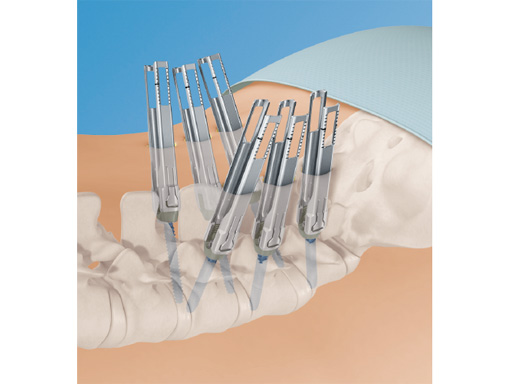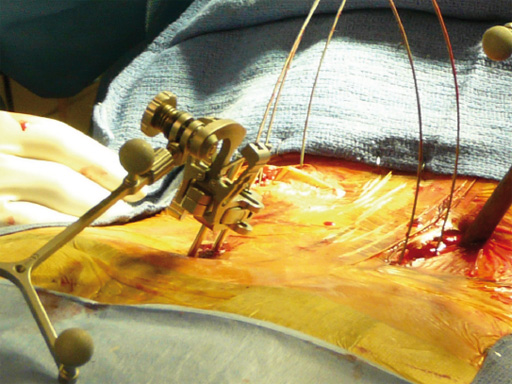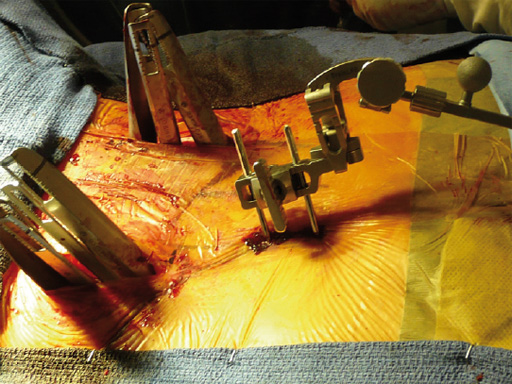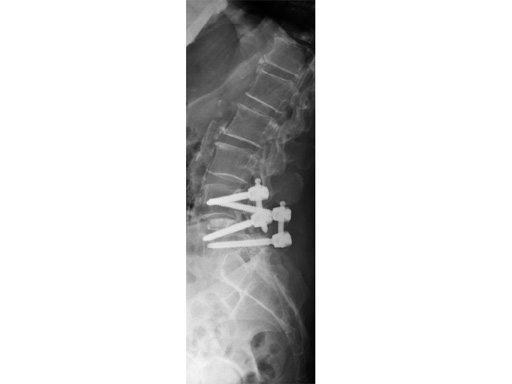
Matrix 5.5 Deformity and Matrix MIS
Matrix MIS allows for minimally invasive rod and screw insertion during thoracolumbar pedicle fixation. Pedicle trauma is minimized by using muscle-sparing approaches to expose patient anatomy.
The Matrix spine system is a universal set of instruments and implants designed to accommodate both open and minimally invasive surgical (MIS) approaches to deformity, as well as degenerative and trauma indications. The system is composed of pedicle screws, pre-assembled polyaxial pedicle screws, monoaxial screws, hooks, locking caps, transconnectors, rods, and polyaxial head implants.
Matrix 5.5 Deformity
The Matrix polyaxial and monoaxial pedicle screw features dual-core, double-lead threads, threaded T25 StarDrive recesses and 50° of angulation with rod reduction features located at the top of the screw head. The matrix 5.5 deformity polyaxial heads can be removed and replaced intra-operatively without removing the bone screw. The 5.5 mm diameter rod material options include titanium, Ti-6Al-7Nb, and CoCr with multiple-length curved pre-contoured and hex-end versions.
Locking caps are square-thread design with a saddle on the underside to prevent skiving during rod reduction. The saddle is designed to pilot the locking cap to the screw head to minimize cross threading. The snap-on transconnector is a pre-assembled implant and features an arched telescoping body. The jaws of the transconnector have the ability to swivel and are spring loaded for tension application until final tightening.
Matrix MIS
This system uses cannulated pedicle screws attached to screw-mounted tissue retractors. This combination allows pedicle screw insertion and rod introduction with minimal tissue disruption. The system is applicable to single and multi-level procedures requiring posterior instrumentation.
Matrix MIS uses the same locking cap and pedicle screw technology as matrix 5.5 deformity and matrix degen.
The 5.5 minimally invasive rods are pre-lordosed with 100mm or 200mm bend radius. The 100mm bend rods are available in 35-85 mm lengths in
5mm increments. The 200mm bend rods are available in 60-130 mm lengths in 5mm increments.
Unique to Matrix MIS are cannulated pedicle preparation instruments, screw-mounted tissue retractors and a rod introduction instrument.
Cases provided by Roger Hrtl, New York, USA
PLIF Technique with Matrix MIS
Hazards and labeling
Due to varying countries’ legal and regulatory approval requirements, consult the appropriate local product labeling for approved intended use of the products described on this website. All devices on this website are approved by the AO Technical Commission. For logistical reasons, these devices may not be available in all countries worldwide at the date of publication.
Legal restrictions
This work was produced by AO Foundation, Switzerland. All rights reserved by AO Foundation. This publication, including all parts thereof, is legally protected by copyright.
Any use, exploitation or commercialization outside the narrow limits set forth by copyright legislation and the restrictions on use laid out below, without the publisher‘s consent, is illegal and liable to prosecution. This applies in particular to photostat reproduction, copying, scanning or duplication of any kind, translation, preparation of microfilms, electronic data processing, and storage such as making this publication available on Intranet or Internet.
Some of the products, names, instruments, treatments, logos, designs, etc referred to in this publication are also protected by patents, trademarks or by other intellectual property protection laws (eg, “AO” and the AO logo are subject to trademark applications/registrations) even though specific reference to this fact is not always made in the text. Therefore, the appearance of a name, instrument, etc without designation as proprietary is not to be construed as a representation by the publisher that it is in the public domain.
Restrictions on use: The rightful owner of an authorized copy of this work may use it for educational and research purposes only. Single images or illustrations may be copied for research or educational purposes only. The images or illustrations may not be altered in any way and need to carry the following statement of origin “Copyright by AO Foundation, Switzerland”.
Check www.aofoundation.org/disclaimer for more information.
If you have any comments or questions on the articles or the new devices, please do not hesitate to contact us.
“approved by AO Technical Commission” and “approved by AO”
The brands and labels “approved by AO Technical Commission” and “approved by AO”, particularly "AO" and the AO logo, are AO Foundation's intellectual property and subject to trademark applications and registrations, respectively. The use of these brands and labels is regulated by licensing agreements between AO Foundation and the producers of innovation products obliged to use such labels to declare the products as AO Technical Commission or AO Foundation approved solutions. Any unauthorized or inadequate use of these trademarks may be subject to legal action.
AO ITC Innovations Magazine
Find all issues of the AO ITC Innovations Magazine for download here.
Innovation Awards
Recognizing outstanding achievements in development and fostering excellence in surgical innovation.








